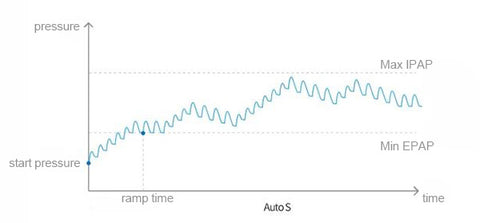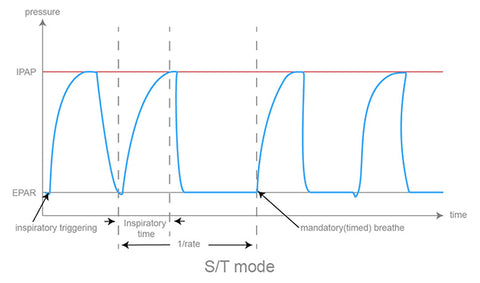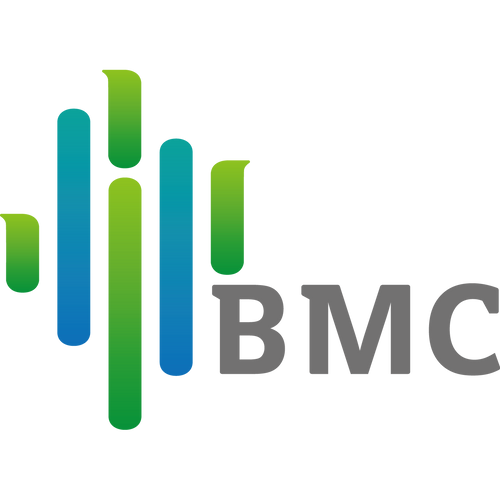In BiPAP machines, a variety of modes are provided to assist patients in breathing.

Generally speaking, BiPAP machines can be divided into two types according to different modes, one type of BiPAP with CPAP mode, S mode, T mode, S/T mode and another type of BiPAP with CPAP, S, Auto S mode.
Let's take a closer look at what these patterns represent.
CPAP mode
The BiPAP machine can work under only continuous positive airway pressure, and reduce pressure as you exhale. There are no settings for EPAP and IPAP.

S mode
S mode: spontaneous mode. The patient triggers breathing of the BiPAP machine, and the IPAP value and EPAP value are needed to be set up. BiPAP does not work if the patient does not initiate breathing. That is, the rise and fall of the pressure of BiPAP machine need to be controlled by patients, which can be said to be a "human-driven machine".
When the patient begins to inhale and the S-mode BiPAP machine senses the inspiratory airflow, the machine begins to increase the pressure to help the patient inhale enough air through higher pressure. When the patient begins to exhale, the ventilator reduces the pressure, making it easier for the patient to expel the exhaust gas from the lungs.
The use of S-mode requires the patient have the ability to breathe independently. If the patient's breathability is not good, the machine cannot be triggered to work. All BiPAP machines have CPAP mode and S mode. So what is the Auto S, T and S/T model?
Auto S
Auto S mode is more intelligent than the first two modes.

If the user sets the minimum EPAP value and maximum IPAP value in advance, the inspiratory pressure provided by the machine will be intelligently adjusted between the two values according to the number of apnea or hypopnea events in a certain period of time. The expiratory pressure and inspiratory pressure are adjusted synchronously, and the pressure difference remains unchanged.
Because of the low expiratory resistance, this mode is suitable for users with high-pressure requirements, and the Auto S mode is suitable for patients with severe snoring and obesity.
Timed mode
In this mode, BiPAP machine can work automatically so this mode is suitable for people who can't breathe on their own.
S/T mode
In fact, it is a combination of S mode and T mode, and in the S/T mode, BiPAP machine can set a backup breath frequency.

For example, if a backup breath frequency is set to 12/min, BiPAP machine works in S mode when the patient's respiratory rate is higher than 12, and the machine is human-controlled. When the patient's breathing rate is less than 12 beats per minute, the machine will trigger T mode (machine-controlled) to ventilate the patient at a rate of 12 beats per minute to avoid a low respiratory rate and lead to insufficient ventilation.
The S/T model is suitable for sleep apnea, respiratory failure, COPD with carbon dioxide retention, obesity and hypopnea, hypothermia and other diseases.
For respiratory failure and COPD, S/T mode is designed to help patients ventilate, reduce hypoxia and carbon dioxide retention due to poor ventilation, relieve respiratory muscle fatigue, and improve quality of life.
Because of those functional modes, the BiPAP machine is considered to be the most comfortable non-invasive ventilator for home use.


